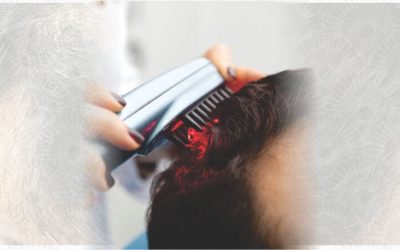Nip That Cold Early: Preventive Respiratory Care for Changing Seasons
Whether it’s a dry summer turning damp, or a cooler breeze following a humid monsoon—seasonal transitions are more than just a weather update. They influence how viruses behave, how your body responds, and ultimately, how susceptible you are to colds, coughs, and more serious respiratory infections.
For centuries, the seasonal cycle of respiratory viral diseases has followed a fairly predictable pattern—peaking during winter in temperate regions. But in tropical zones, it’s not the cold, but the rapid shifts in temperature, humidity, and air quality that seem to trigger spikes in respiratory illness. In fact, emerging studies suggest that climatic variables play a stronger role than we once imagined.
What Triggers Respiratory Illness in Changing Seasons?
Scientific literature now supports what many have intuitively experienced—your risk of respiratory infection increases during seasonal changes, not just in cold climates but also in hot and humid areas. But why?
1.Environmental Changes:
Temperature drops, high humidity, or even poor air circulation indoors affect:
- Virus stability: Some respiratory viruses like rhinoviruses and coronaviruses survive longer in specific temperature-humidity ranges.
- Transmission rates: High humidity reduces droplet evaporation, helping viruses linger longer in the air.
- Air quality: Pollen, dust, and mold spores rise after rains or during dry transitions, further irritating airways.
2.Host Physiology & Immune Modulation:
Changing weather alters the body’s defenses:
- Reduced mucosal immunity due to sudden cold exposure
- Lower vitamin D from less sun exposure
- Disrupted sleep and stress cycles, weakening immune response
- Increased indoor crowding during rainy spells enhances virus spread
Scientific Evidence: What Research Shows
The seasonality of diseases like influenza, SARS, and now SARS-CoV-2 (COVID-19) is being studied in light of these environmental and physiological changes. Key observations include:
- Humidity and temperature can modulate host immune responses, not just virus behavior.
- Persistent viral shedding (e.g., in stools or saliva) means some viruses can linger quietly and re-emerge under specific environmental conditions. For example, SARS viral RNA was found in patient stools for up to 9 weeks, raising questions about silent carriers during future seasons.
Key takeaway: Our immune system doesn’t just fight pathogens—it’s deeply influenced by environmental cues. If those cues shift too quickly, we’re more vulnerable.
How to Stay One Step Ahead:
1.Build Long-Term Immunity
Forget seasonal fixes—immune system boosters should be part of your lifestyle. Use scientifically-backed herbal immune boosters such as:
- Moringa: High in vitamins A, C, and E
- Thymus vulgaris (Thyme): Supports airway health
- Curcumin C3 Complex®: Anti-inflammatory and antioxidant
These aren’t folk remedies—they have clinical validation for immune modulation.
2.Improve Everyday Hygiene
Especially during monsoon and humid phases:
- Wash hands frequently
- Clean high-touch surfaces like doorknobs, phone screens, and remotes
- Avoid sharing handkerchiefs, towels, and bedding
- Keep rooms well-ventilated, even during rain
3.Eat & Drink for the Climate
Food can be medicine—or make things worse if not adapted to the season.
- Avoid cold drinks, especially during or after rain
- Choose warm soups, herbal teas (tulsi, ginger, pepper)
- Add turmeric, cinnamon, cumin, and garlic to daily meals
- Keep dairy minimal if you’re congested
4.Get Strategic Sunlight & Sleep
- 20 minutes of morning sun = natural vitamin D synthesis
- Sleep 7–8 hours to balance cortisol and allow recovery
- Avoid excessive fan or AC exposure during sleep—this dries out nasal passages
What Happens If You Get a Cold Anyway?
Catching a cold isn’t a failure it’s your body’s way of asking for rest and regulation. But the sooner you intervene, the better.
Early Response Plan:
- Start warm saline gargles and steam inhalation immediately
- Increase warm fluids and reduce dairy
- Use zinc lozenges or herbal syrups if needed
- Continue your immune booster—don’t stop it after getting sick
Why This Matters Beyond Just Health
Respiratory diseases like SARS and COVID-19 have shown us the economic and public health consequences of viral outbreaks. With even minor illnesses causing major disruption (missed school, lost workdays, hospital visits), preventive care isn’t just personal—it’s societal.
There are also gaps in predicting viral recurrence, especially in tropical areas, where classical “winter” models don’t apply. Most vaccines and antiviral drug research are based on temperate zone epidemiology. That’s a dangerous blind spot.
Conclusion
Seasonal illnesses are not inevitable. They’re a sign that your body and the environment are negotiating a transition. Help your system recalibrate with:
- Long-term immune support
- Responsive lifestyle changes
- Evidence-based herbal care
And remember “nipping the cold early” isn’t just about treating symptoms. It’s about respecting your body’s signals and staying one step ahead of climate-triggered challenges.
References:
- Seasonality of infectious diseases and severe acute respiratory syndrome–what we don’t know can hurt us – 2004 Oct – https://pmc.ncbi.nlm.nih.gov/articles/PMC7129396/
- Seasonality of Respiratory Viral Infections – 2020 Sep – https://pubmed.ncbi.nlm.nih.gov/32196426/











